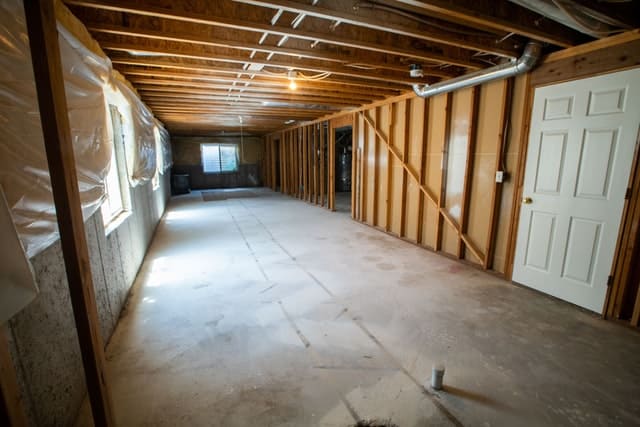When talking about keeping your basement dry, a lot of people will tell you to invest in sealing materials just to plug up any holes. While that may work for a while, in the long term it’ll mean having to reapply everything entailing a lot of work on your part.
That’s not to say sealants won’t work against cracks and such. But if we’re talking about keeping that basement dry, you’ve only to look for french drains to ensure a more permanent fix to a common problem.
With less maintenance and immediate improvements, it’s easy to understand why this is the best bang-for-buck solution, especially when you consider the fact you don’t have to replace anything.
How Does it Work?
First used on farmlands, the french drain is actually an American invention, named after the inventor rather than the country. Originally, french drains were terra cotta tiles stacked on top of the other creating a makeshift pipe that would let water in from the sides as well.
Nowadays, you might hear these called drain tiles. These tiles are normally placed near the foundation of a residential building. This lets the french drain relieve the pressure created by the water underground.
That’s because, with the french drain, the water is drained into the pipe rather than left in the ground. For this reason, interior installations are normally advised for cases wherein hydrostatic pressure forces water into the basement.
These cases of increased pressure normally occur thanks to heavy rainfalls or flooding in the area. When these situations occur, there is a proportional rise in the water table, increasing the hydrostatic pressure in the area.
Installation
There are two ways that people make use of these french drains. One of them is mentioned above; interior installation. This is what most people apply in their own homes for the purpose of keeping basements and the like dry.
Alternatively, some people install these at the exterior. Exterior installations use the same principles; they relieve the pressure in the soil. Keep in mind though that exterior installations are normally supported by waterproofing membranes along the walls of the foundation.
In both cases, a pump is needed to get rid of the water. These french drains make use of a sump pump with an appropriate specification for the amount of water that the drain is predicted to move. Of course, erring on the side of caution would be best.
For exterior installations though, take note that most people would make use of PVC drains due to the strength of the material. This helps it withstand the pressure of the soil.
Whether you choose to install the french drain inside or outside, the most important thing to keep in mind is to make sure that you’ve done your research and gotten advice from an expert.
Conclusion
We hope this article has shed some light on the benefits of adding a french drain in your basement. As you can see, this simple addition will go a long way when it comes to keeping your basement dry and free from water damage. Indeed, there’s no question that the french drain should be near the top of the list of priorities when it comes to home drainage solutions in Michigan.
Sir Williams Drainage And Waterproofing Solutions provides residential And commercial property owners with quality and reliable landscaping services in Belleville, Sumpter, and Van Buren Township Areas. From waterproofing and landscaping to outdoor drainage solutions, our range of services is the best in the business. Contact us whenever you need a french drain installed.

 (248) 252-5248
(248) 252-5248 